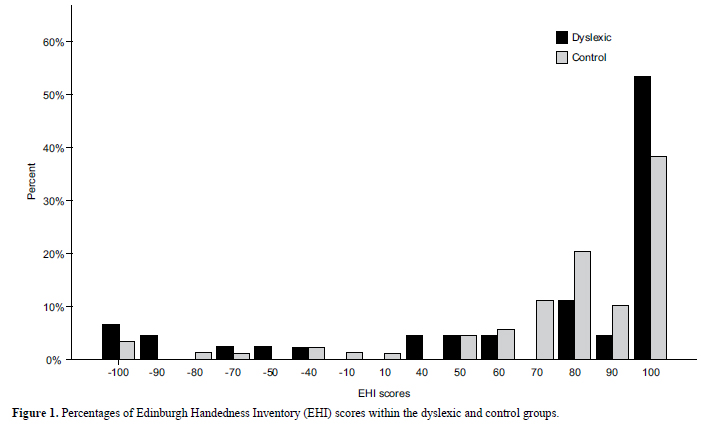Research results with regard to handedness and dyslexia have been ambiguous. The present study investigated the relationship between handedness and dyslexia in secondary school students based on genetic (Right-Shift) and hormonal-developmental theories of handedness. A total of 135 students (45 dyslexics and 70 age- and sex-matched controls) participated in the study. Handedness was defined according to the Edinburgh Handedness Inventory. We developed several classifications that represented various levels of handedness. Both continuous and dichotomous classifications of handedness revealed a small but reliable increase in the proportion of non-right-handers among dyslexics, likely because of the increased proportion of dyslexics among pure left-handers. Dyslexics did not display precisely the same pattern of right and left responses as controls, with some differences at the extremes of the continuum. The present results provide empirical support for Annett's (1985) Right-Shift theory predictions. Additionally, the present study indicates that using a numerical scoring system or dichotomous classifications with restricted criteria that permit the measurement of several degrees of handedness appears to better determine hand preference than using broad classifications into handedness groups.
dyslexia; hand preference; secondary school students



